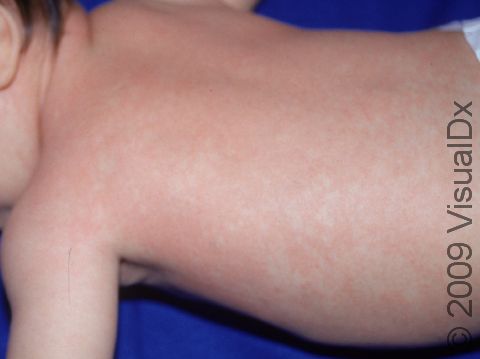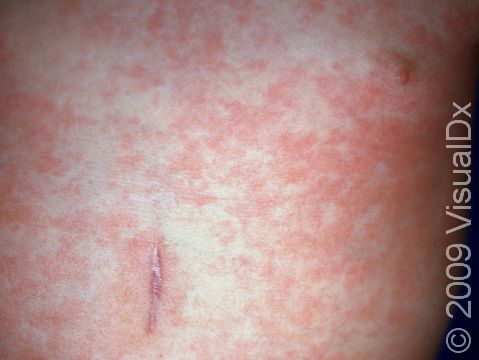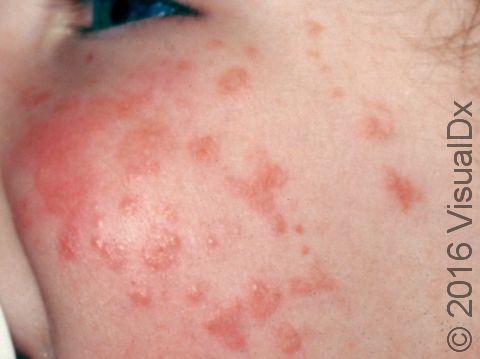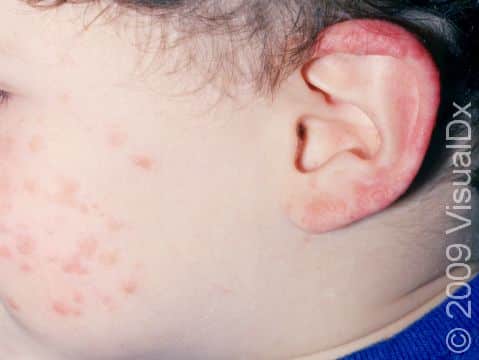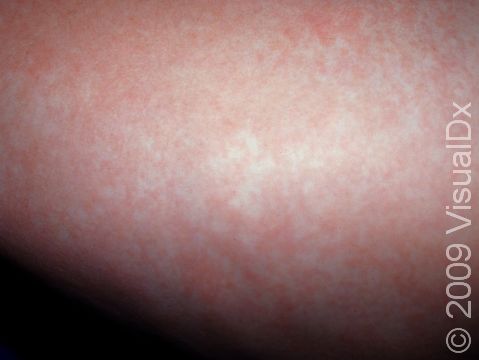Roseola (Sixth Disease)
Roseola, commonly known as sixth disease, is a mild illness caused by a virus found in the herpes family of viruses. It typically resolves on its own without any medications or other treatments. Children who are affected may have 3-5 days of a high fever, usually 102°F (38.9°C) or higher. When the fever subsides, the child develops a rash all over their body. Seizures may occur during the period of fevers. The rash usually begins on the chest and spreads to the neck, arms, and legs. After 1-3 days, the rash fades.
Who's At Risk?
The typical age of those commonly affected by roseola is between 6 months and 1 year. Infants younger than 6 months are usually protected from this disease naturally from birth by the mother’s immune system. Roseola can occur in babies as young as 3 months old, though. Roseola can develop in children year-round; however, some studies indicate a higher incidence during spring and fall months.
Signs & Symptoms
Your baby may seem otherwise well but have a high fever for about 4 days followed by a widespread rash of 2-3 mm macules (small, flat, smooth areas) and papules (small, solid bumps) that often begin on the torso and may spread to the neck as well as the arms and legs. In lighter skin colors, the rash is pink or red. In darker skin colors, the redness may be harder to see, or it may appear as a faint pink, dark red, or purple color.
Self-Care Guidelines
Roseola goes away without any treatment. While waiting for the symptoms to improve, you can:
- Help reduce the baby’s fever with acetaminophen (Infants’ Tylenol) or ibuprofen (Infants’ Motrin) and cool sponge baths. (Do not use very cold water, ice, or alcohol rubs.)
- Encourage the baby to drink fluids to avoid dehydration.
Note that there is no way to prevent roseola from spreading because it is contagious before any symptoms appear.
Treatments
Although there is no specific treatment for roseola, your baby’s medical professional may recommend treatment of associated symptoms, such as controlling fever.
Visit Urgency
- Call the baby’s medical professional if the fever does not go down with acetaminophen / ibuprofen, if the fever is over 102°F (38.9°C), if the baby is difficult to wake up, or if the baby is very irritable or appears very ill.
- If the baby has convulsions or seizures due to fever, seek urgent medical care.
Trusted Links
References
Bolognia J, Schaffer JV, Cerroni L. Dermatology. 4th ed. Philadelphia, PA: Elsevier; 2018.
James WD, Elston D, Treat JR, Rosenbach MA. Andrew’s Diseases of the Skin. 13th ed. Philadelphia, PA: Elsevier; 2019.
Kang S, Amagai M, Bruckner AL, et al. Fitzpatrick’s Dermatology. 9th ed. New York, NY: McGraw-Hill Education; 2019.
Paller A, Mancini A. Paller and Mancini: Hurwitz Clinical Pediatric Dermatology. 6th ed. St. Louis, MO: Elsevier; 2022.
Last modified on June 18th, 2024 at 1:41 pm

Not sure what to look for?
Try our new Rash and Skin Condition Finder

